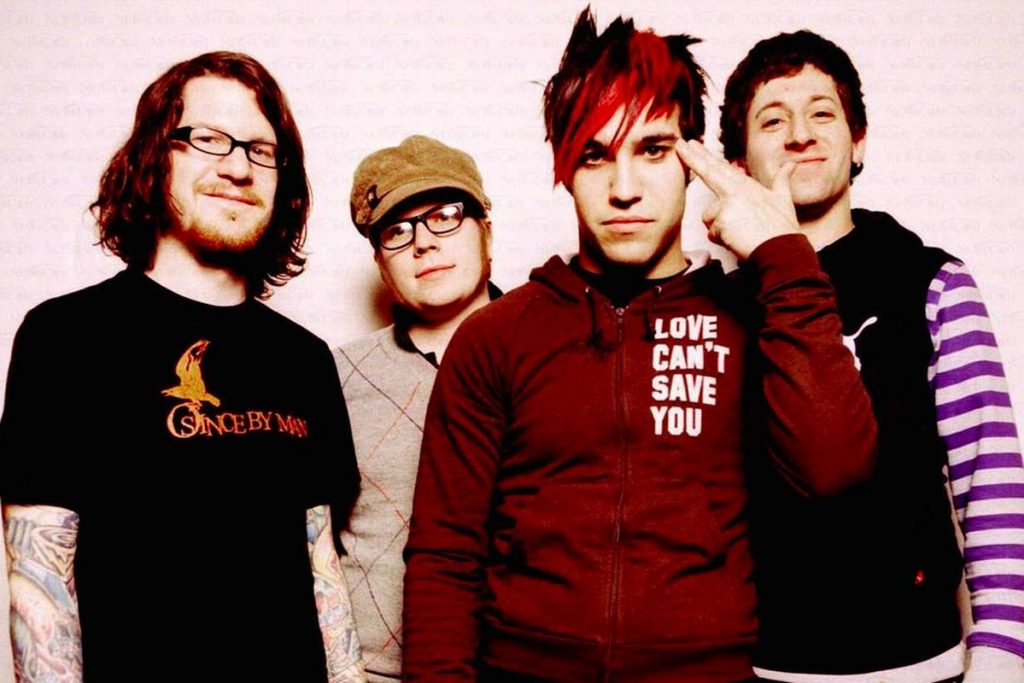
Like many people whose adolescence spanned the 2000s, I was a teenage emo. My first concert was My Chemical Romance, my field of vision was regularly obscured by a swoopy fringe, and my notebooks were filled with lyrics by the likes of Bright Eyes, Dashboard Confessional and Fall Out Boy.
As an emotional young person experiencing depression, those bands were a lifeline.
http://blackthornonline.com They spoke with candour about topics that seemed to mimic my experiences, and displayed vulnerability around feelings that I wasn’t used to seeing reflected in pop culture. They got me through a lot.
The Future Of Australian Music Doesn't Have To Be Straight And Male
In adulthood, however, it’s difficult for me to listen to many of those bands. For all its sensitivity, a lot of the emo music that was popular throughout the mid-2000s embraced a pretty nauseating depiction of women. There is something particularly sobering about realising that many of the songs you loved as a young person espoused perspectives that, as an adult, make you profoundly uncomfortable. As a 25-year old, listening to young men objectify the women in their lives and vilify those who chose to leave is a bitter pill to swallow.
A couple of weeks ago, Jesse Lacey of emo giants Brand New was accused of sexual misconduct and grooming multiple teenage girls during the 2000s. Lacey allegedly requested several young women send him nude photographs, and asked at least one to watch him masturbate over Skype. Emotional manipulation is a common theme in the stories, and it’s important to point out that at the time, the women were 15 and 17 years old while Lacey was in his mid-twenties.
Lacey issued a public statement through Brand New’s Facebook page that, without directly addressing the accusations, apologised for having “hurt people, mistreated them, lied and cheated”.
In the wake of the news, songs like ‘Me Vs. Maradona Vs. Elvis’ — which depicts a narrator taking advantage of intoxicated women to combat his loneliness — take on an even more unsettling tone than they already did. “I’ve got desperate desires and unadmirable plans,” croons Lacey, expecting listeners to empathise with the tortured soul narrative he constructs rather than be creeped out at his admission.
In hindsight, it seems obvious that the language and culture of emo legitimised behaviour that was, at its worst, downright predatory, manipulative and toxic. In the emo songs of the 2000s, women are positioned as one-dimensional figures that exist solely to fulfil the needs of men. When those women have the audacity to exist outside of those men’s lives, they are framed only in terms of the misery and heartache they’ve caused them.
“TO THE EMO FRONTMAN, EVERYTHING — INCLUDING HIS RELATIONSHIPS WITH WOMEN — CIRCLES BACK TO HIM, AND HIS EGO, AND HIS PAIN”
This is somewhat unsurprising given that emo is a genre where the emotional punch is primarily drawn from a microscopic level of introspection that’s often self-indulgent. To the emo frontman, everything — including his relationships with women — circles back to him and his ego and his pain, leaving zero space for others to be complex, fully-formed human beings.
As rock critic Jessica Hopper writes in her seminal 2003 essay
Emo: Where the Girls Aren’t, “Girls in emo songs today do not have names. We are not identified beyond our absence, our shape drawn by the pain we’ve caused. Our lives, our day-to-day-to-day does not exist, we do not get coloured in. Our actions are portrayed solely through the detailing of neurotic self-entanglement of the boy singer — our region of personal power, simply, is our impact on his romantic life.”
That deliberate invisibility is an enormous part of how mid-2000s emo supported a culture of objectification and misogyny. There’s already an inherently imbalanced power dynamic between the male singer of a rock band and the young women who love their music. However, when those songs repeatedly tell a band’s female fans that their value is directly correlated with their willingness to appease the desires of men, that dynamic is made all the more severe.

A very mid-noughties press shot
It’s worth noting how often when the conversation about sexism in music comes up, the soft masculinity of emo is left out of the discussion in favour of more explicit work. For decades, accusations of misogyny have been used to write off hip-hop entirely. There may be validity in some of those claims, but it takes a lot of cognitive dissonances to attack a line from a rap song on the way to a DIY show with four all-male emo bands singing about how much they despise their ex-girlfriends.
Toxic masculinity doesn’t become any less damaging just because it’s disguised under a layer of sensitivity or heartbreak — if anything, it’s more dangerous in how pernicious it is. It’s easy to criticise an obviously degrading line about women, it’s harder to address how the narratives within emo songs implicitly undermined and devalued them.
Fast-forward to 2017 and there’s an increasing spotlight on the current crop of emotionally-aware bands rightfully taking space and challenging the misogyny of the wave before it. Artists like Julien Baker, Camp Cope and Cayetana prove that powerful vulnerability and introspection are possible without the “women are cruel, woe-is-me” narratives that were previously a hallmark of the genre.
With any hope, these acts will continue to receive the immense respect and admiration they deserve, and the troubling culture of 2000s emo stays in the past — exactly where it belongs.

Comments
Post a Comment